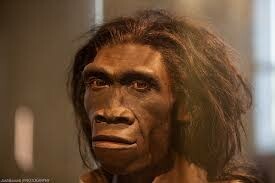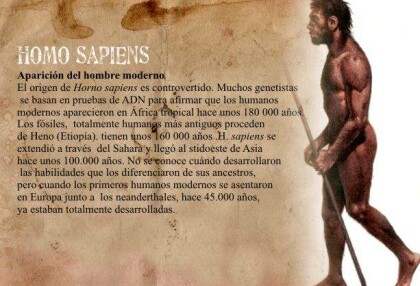Biology, Karl Irvin Baguio [the speed reading book txt] 📗

- Author: Karl Irvin Baguio
Book online «Biology, Karl Irvin Baguio [the speed reading book txt] 📗». Author Karl Irvin Baguio
At the end of the Mesozoic Era, a great extinction took place, and the dinosaurs disappeared. Although the reasons for the extinction are not clear, many scientists believe that a great meteor collided with Earth, presumably in the Yucatan Peninsula area of Mexico. The dust raised by this impact so darkened Earth that photosynthesis became impossible. The amount of available food became scarce, and the dinosaurs disappeared. Mammals filled the void left by the dinosaurs’ absence.
The Cenozoic Era, the most recent era, has been called the age of mammals. The era began about 65 million years ago and extends to the present time. Mammals that survived the great extinctions at the end of the Mesozoic Era radiated throughout Earth and filled the niches once inhabited by the dinosaurs. Primates first appeared on Earth about 35 million years ago, and modern humans are believed to have evolved about 40,000 years ago.
Origin of Organic Molecules
Scientists hypothesize that the universe came into existence about 15 billion years ago with a colossal explosion often referred to as the big bang. The gases and dust from that explosion produced the earliest generation of stars, and over a period of billions of years, the stars exploded, and their debris formed other stars and planets. The solar system was presumably formed in this way 4 to 5 billion years ago. During the next billion years, the molten earth cooled, forming a hardened, outer crust. About 3.5 billion years ago, living things came into being.
About 3.8 billion years ago, Earth’s atmosphere consisted of such elements as nitrogen, hydrogen, sodium, sulfur, and carbon. Some of these elements combined to form hydrogen sulfide, methane, water, and ammonia. Water vapor condensed, resulting in millions of years of torrential rains, during which the oceans formed. Gas from Earth’s core came to the surface through volcanoes. Ultraviolet radiation bathed Earth, and the elements and compounds interacted with one another to form complex molecules.
In 1953, Stanley Miller and Howard Urey performed a classic experiment in which they circulated methane, ammonia, water vapor, and hydrogen gas in a closed environment and passed electric sparks through it. After several days, they discovered that complex compounds of carbon had formed in the mixture. Their experiments indicated that in the primitive Earth atmosphere, complex organic molecules could form, including amino acids. The hypothesis they expressed is known as primordial soup.
Recent hypotheses about the origin of organic molecules suggest that these molecules may have formed in hydrothermal vents deep in the oceans, where hot gases and elements emerge from cracks in Earth’s crust. Living organisms have been found near these vents, lending credence to the hypothesis.
Chapter 14: Human EvolutionHomo Erectus
The first hominid to leave Africa for Europe and Asia was Homo erectus. Evidence suggests that Homo erectus replaced Homo habilis. Homo erectus was about the size of modern humans and was fully adapted for upright walking. Its brain was much larger than its ancestor’s brain, but it had features that separate it from modern humans. The tools of Homo erectus were more sophisticated than those of Homo habilis. Homo erectus was perhaps the first hunter-gatherer.
Homo erectus was skillful at hunting and butchering animals and is presumed to be the first fire user. Archaeologists believe Homo erectus established early cultures and had methods for communicating information to the next generation. The concept of language is believed to have existed in Homo erectus.

Homo Sapiens
The earliest fossils of Homo sapiens date to about 200,000 years ago. Homo sapiens means “intelligent human,” and modern humans are classified in this species. Homo sapiens is believed to have evolved from Homo erectus. The evolution is thought to have taken place in Africa. The earliest fossils of Homo sapiens show a gradual change over the last 200,000 years into varieties of Homo sapiens, but not new species.
The Neanderthals lived from about 125,000 to about 35,000 years ago in Europe. Neanderthals were short, stocky, and powerfully built. They had a large skull and heavy face with prominent brow ridges, a sloping forehead, and a heavy jaw but a small chin. Their large heads contained larger brains than those of today’s humans. Neanderthals made tools of various types and lived in caves and huts.
While Neanderthals were still in existence, the oldest fully modern Homo sapiens emerged. This modern variety is called Cro-Magnon, named for a cave in southwestern France where the first fossils were found. Cro-Magnon was somewhat similar to Neanderthals, but they had smaller heads and less prominent faces. Similar to modern humans, Cro-Magnon hunted, displayed culture, and showed the gradual development that led to today’s societies. About 10,000 years ago, the first evidence of cities and social structure existed, and by about 5,000 years ago the first great civilizations began to flourish. Today’s humans are the descendants of this variation of Homo sapiens.

Australopithecus
Fossils and fragments of jaws suggest to scientists that the ancestors of monkeys, apes, and humans began their evolution approximately 50 million years ago. Additional evidence for this evolution has been derived from experiments in biochemistry and changes that occur in the DNA of cells. Mutation rates in the DNA have been calculated, and evolutionary changes can be determined from these calculations. By noting mutation rates, scientists can estimate the time since two species diverged from a single common ancestor, and they can develop a family tree.
Scientific evidence indicates that the first hominids (humanlike creatures) belonged to a group called Australopithecus. Members of the genus Australopithecus are believed to have displayed a critical step in human evolution: the ability to walk upright on two feet.
In 1924, the complete skull of a young child was found in a limestone quarry in South Africa. The fossil was unlike any ever seen before. The fossil was named Australopithecus africanus. Since then, several other A. africanus fossils have been found, showing heavy jaws, low foreheads, and small brain capacities.
In 1974, a team led by Donald Johanson and Tim White found a nearly complete skeleton of a female in the Afar region of Ethiopia. The fossil, which is earlier than A. africanus, is widely known as “Lucy,” but it is classified as Australopithecus afarensis.
In 1977, Mary Leakey and her group made another important discovery: a set of fossil hominid footprints. The footprints, dated at some 4 million years of age, show that the two Australopithecenes that made the footprints walked erect.
Members of the Australopithecus genus are considered the first hominids but not the first humans. Their brains were small in comparison with human brains, and they had long, monkeylike arms. Other members of the Australopithecus genus have been classified as A. robustus and A. boisei. These different species of Australopithecus lived in Africa and are believed to have been primarily plant eaters. Members of the Australopithecus group eventually died out about 1 million years ago.
Homo Habilis
Fossils dating back about 2 million years have been found with brain capacities much larger than any Australopithecus fossil. On the basis of brain size, these fossils are named Homo habilis. Homo habilis is regarded as the first human and the first species of the genus Homo. Homo habilis means “handy human.” Members of this species were apparently able to use tools, build shelters, and fashion protective clothing. Members of the species appear to have spent much time in trees as well as on the ground, and to have walked erect on two legs. Homo habilis is thought to have been the predominant species during the Stone Age, a time during which humans fashioned stone tools. Homo habilis eventually became extinct, presumably about 35,000 years ago.
Chapter 15: The Unity and Diversity of Life
Prokaryotes and Viruses
Prokaryotes are microscopic organisms that include the domains Bacteria and Archaea. Prokaryotes lack a nucleus, and they have no organelles except ribosomes. The hereditary material exists as a single loop of double-stranded DNA in a nuclear region, or nucleoid. Prokaryotic cells multiply by an asexual process called binary fission. No evidence of mitosis is apparent in the reproductive process.
Prokaryotic cells live in virtually all environments on Earth, including soil, water, and air. They have existed for approximately 3.5 billion years, and they have evolved into every conceivable ecological niche on, above, and below Earth’s surface.
Prokaryotic cells are often categorized according to their shapes. The spherical bacteria are referred to as cocci (the singular is coccus); the rod-shaped bacteria are bacilli (the singular is bacillus); and the spiral bacteria are spirochetes if they are rigid or spirilla (the singular is spirillum) if they are flexible.
Recent research has focused on the microbiome and the important role prokaryotes play in human health and disease. The microbiome is the numerous bacterial communities found on and within the human body. Our intestines alone are home to approximately 700 species of prokaryotes, and their numbers outnumber all human cells in the body tenfold.
Domain Bacteria
Characteristics of bacteria
Domain Bacteria includes the prokaryotes people encounter on an everyday basis. Most bacterial species are heterotrophic; that is, they acquire their food from organic matter. The largest number of bacteria are saprobic, meaning that they feed on dead or decaying organic matter. A few bacterial species are parasitic; these bacteria live within host organisms and cause disease.
Certain bacteria are autotrophic, meaning they synthesize their own foods. Such bacteria engage in the process of photosynthesis. They use pigments dissolved in their cytoplasm for the photosynthetic reactions (see Chapter 5). Two groups of photosynthetic bacteria are the green sulfur bacteria and the purple bacteria. The pigments in these bacteria resemble plant pigments. Some autotrophic bacteria are chemosynthetic.
These bacteria use chemical reactions as a source of energy, and synthesize their own foods using this energy.
Bacteria may live at a variety of temperatures. Bacteria living at very cold temperatures are psychrophilic, those living at human body temperatures are mesophilic, and those living at very high temperatures are thermophilic. Bacteria that require oxygen for their metabolism are referred to as aerobic, while species that thrive in an oxygen-free environment are said to be anaerobic. Some bacteria can live with or without oxygen; they are described as facultative. Most bacterial species live in a neutral pH environment (pH 7), but some bacteria can live in acidic environments (such as in yogurt and sour cream), and others can live in alkaline environments. Certain bacteria are known to live at the pH of





Comments (0)